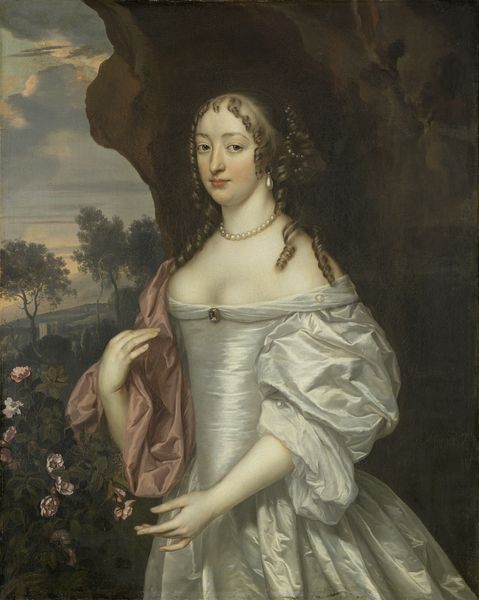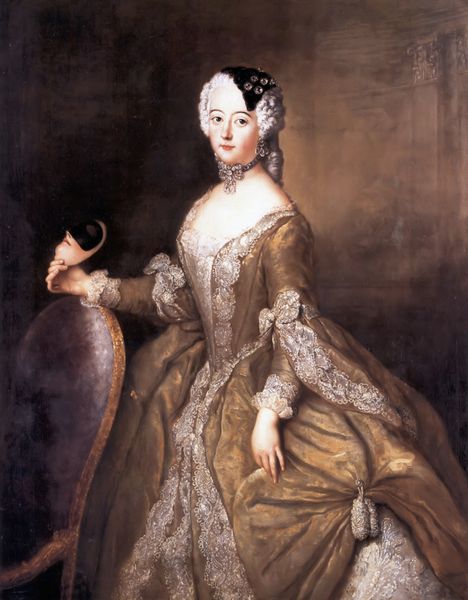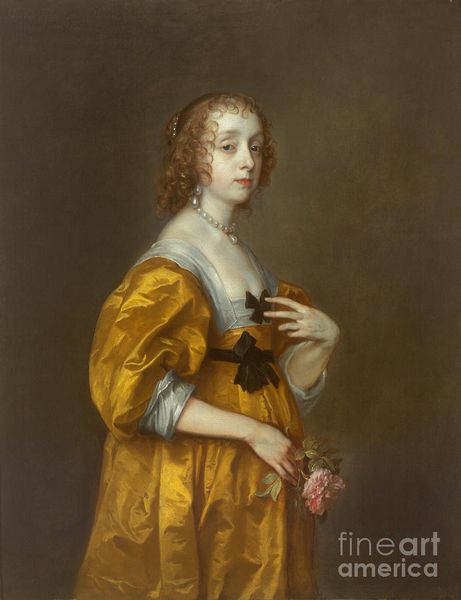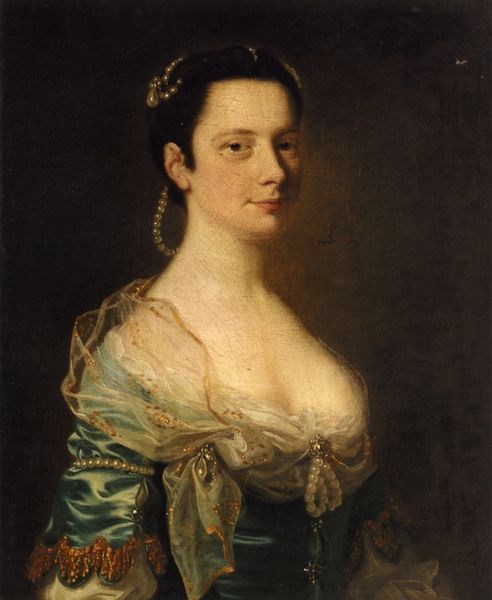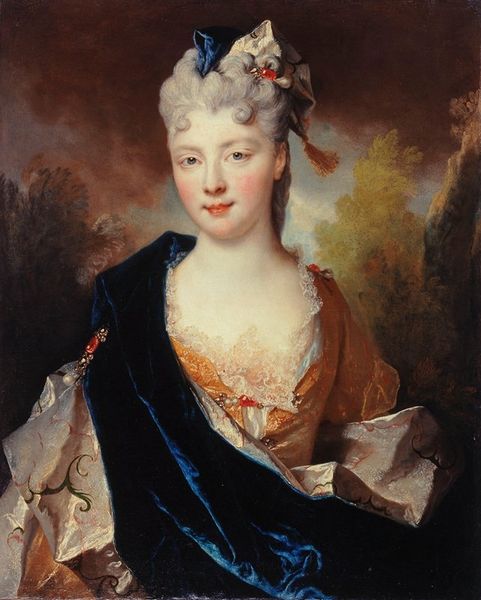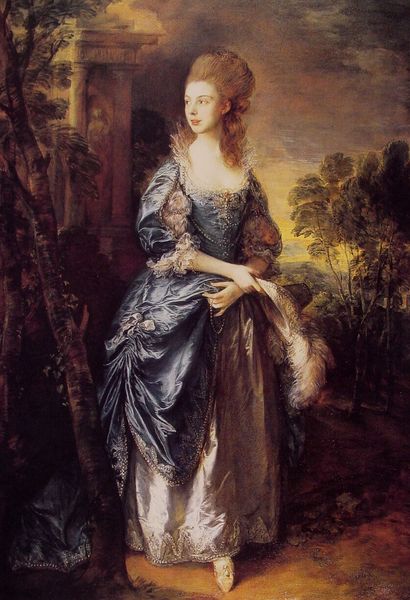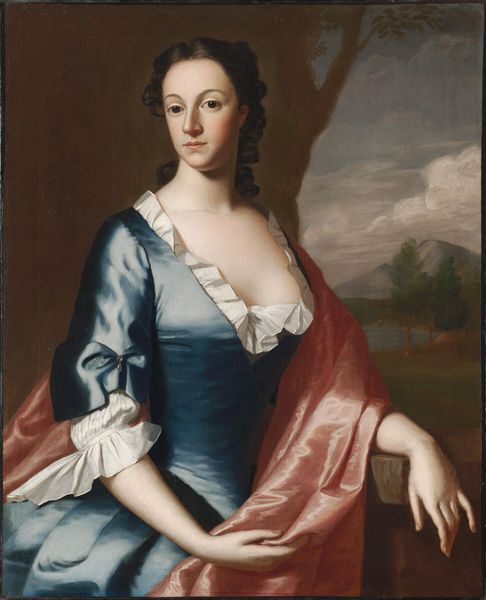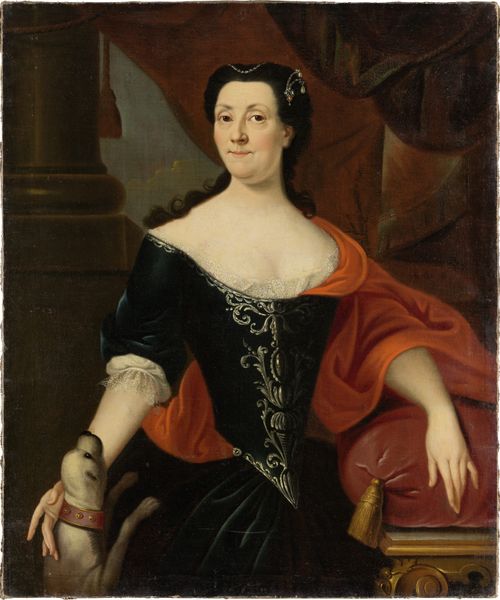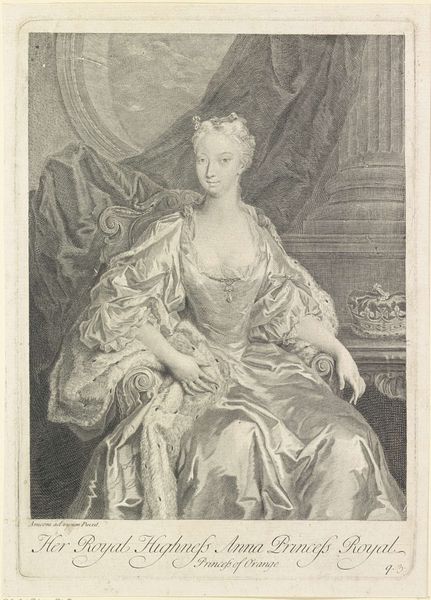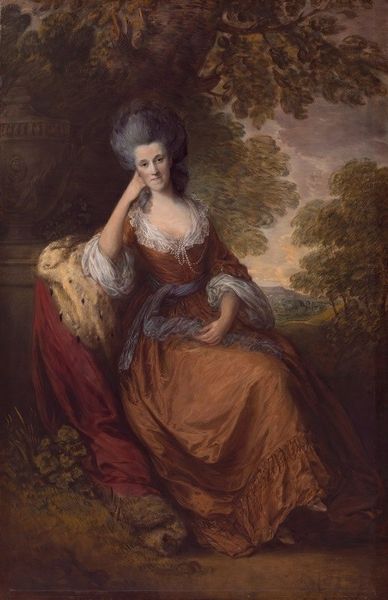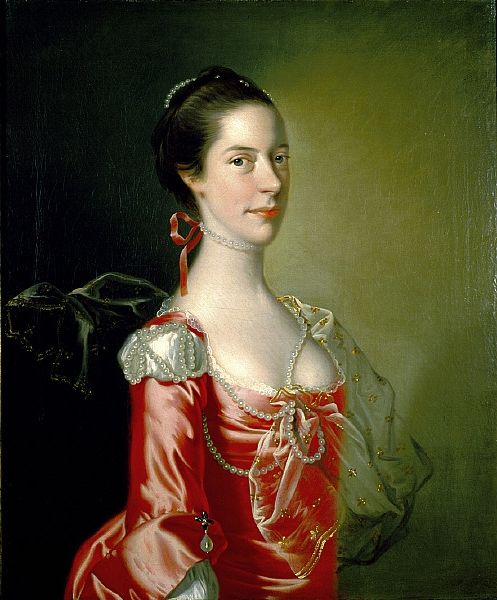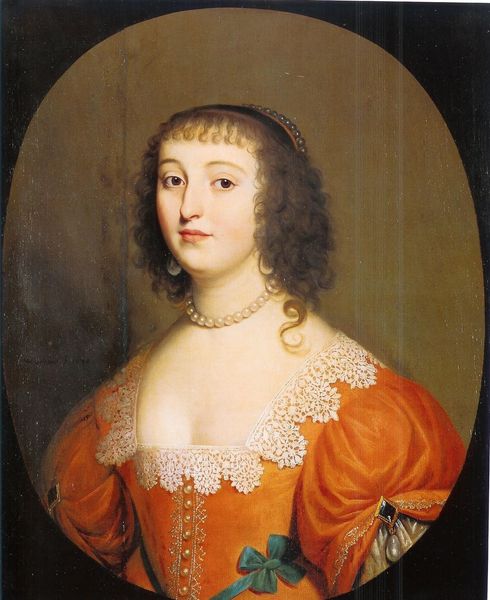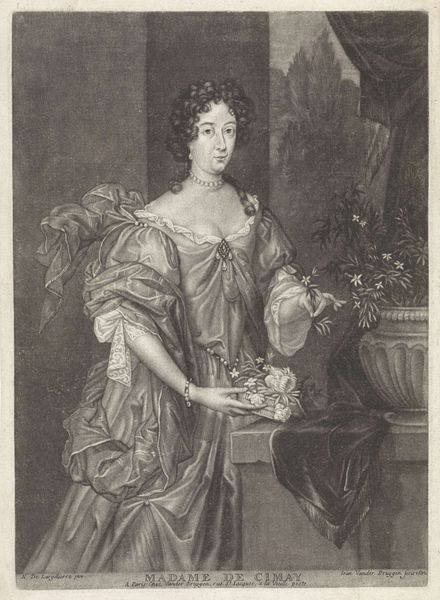
painting, oil-paint
#
portrait
#
gouache
#
painting
#
oil-paint
#
figuration
#
oil painting
#
romanticism
#
history-painting
#
academic-art
#
fine art portrait
Copyright: Public domain
Curator: Here we have George Dawe’s “Grand Duchess Anna Pavlovna,” an oil painting from around 1825. What strikes you initially? Editor: The pose is very studied, and the palette is quite restrained except for the vermillion dress, which certainly dominates. There’s a formal quality – balanced composition, controlled brushstrokes…it feels very deliberate. Curator: Dawe was a celebrated portraitist in his time, favored by the Russian aristocracy. He benefitted greatly from royal patronage; think of the resources needed to achieve the level of painterly skill to render her fabrics so precisely. This image operates as both a personal depiction of the Grand Duchess and a display of her family's wealth and taste. Editor: Yes, the textile itself would have been expensive. Look at the detailing around the borders of the blue shawl and how he has represented the fall of the cloth with incredible precision. However, it’s how these various material signs come together that creates meaning, not just the materials themselves. The subtle way the artist conveys her status via classical allusion too, with that neoclassical bust nestled behind her, for example. The Grand Duchess's body becomes almost sculptural. Curator: Consider too that Dawe had access to specific pigments, priming methods and a social environment that highly valued classical allusion. There was significant labor involved; think of the individuals who sourced and refined these materials to enable him to apply his craft at this scale. This represents considerable socio-economic control within the artistic milieu of the time. Editor: Precisely! It’s also a carefully constructed symbol. The somewhat romantic setting creates an allegorical portrait as much as an attempt to capture her likeness. Her dress reads as “Empire” silhouette, and even the simple style reflects contemporary preferences, with everything harmoniously constructed to signal both individual and social identity. Curator: A culmination of human effort and status displayed for all to admire, undoubtedly. It really illuminates how aristocratic commissions reflect wider social and economic relationships. Editor: Indeed. By looking at the compositional elements and construction of the portrait, it is hard to ignore the subtle classical visual symbolism—creating something deeply striking.
Comments
No comments
Be the first to comment and join the conversation on the ultimate creative platform.

